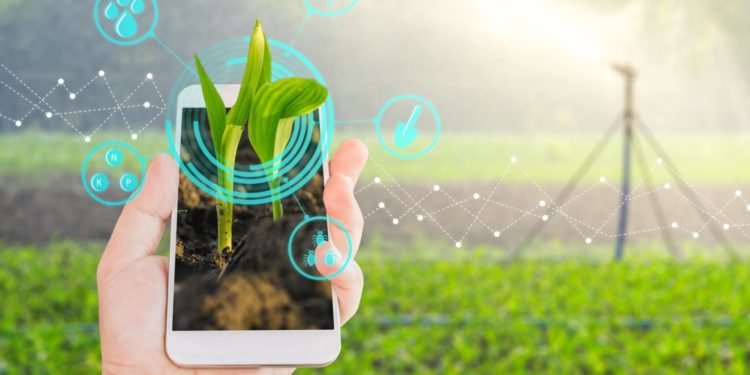Hydroponics, smart greenhouses and geoinformation systems – we learned what innovations can raise our harvests to a record.
President of Tajikistan Emomali Rahmon regularly recalls the rational use of land and the need to use innovative technologies to increase crop yields. But this is done with great difficulty – dehwan simply does not have sufficient funds for this.
In Tajikistan, the main subjects of agricultural production are Dehkan farms and cooperatives.
There are not so many land plots suitable for agricultural production in the republic.
Irrigated lands amount to about 700 thousand hectares, over the past 30 years their area per capita has decreased from 0.12 to 0.06 hectares.
Today, agriculture is facing many problems related to the deterioration of biological diversity, drought, desertification and climate change, the use of mineral fertilizers and chemicals, insufficient water supply.
In this regard, the use of innovative technologies in the agricultural sector plays an important role. There are a lot of them, but we will focus on five of them for now.
1. Precision farming
Precision farming is based on the understanding that land is heterogeneous and cannot be cultivated with hectares or conventional fields.
In the multi-relief arrangement of agricultural lands in Tajikistan, this method is one of the most effective.
To obtain a better quality crop, it is necessary to process them in separate sections, taking into account vegetation, humidity and soil productivity. A point-based fertilizer application tactic is needed, instead of continuous fertilization.
Satellite images and UAVs (unmanned aerial vehicles) help in determining the heterogeneity of farmland plots. Sensors on machinery and fields allow you to assess the landscape, humidity, temperature, and pH levels. Fields are divided into many micro-plots according to the type of crops, soil, etc.
Precision farming technologies collect and analyze data about your every action on the field.
They help to make both quick and long-term decisions: which seeds to sow, on which site, what amount of fertilizers or chemicals are needed, etc.

This requires investments. The Ministry of Agriculture of Tajikistan has already approached the government with a proposal to create a special fund for innovative development.
It is needed to create competitive production in the agro-industrial complex, optimize economic relations in the system of cooperation (both agricultural and consumer), purchase agricultural machinery, seeds and fertilizers and other innovative measures by attracting foreign investment, technical assistance and preferential loans.
2. Smart greenhouses
The head of the water farm of Tajikistan Kholmurod Rahmon fulfilled his promise to give water to the people
Growing crops in an enclosed space removes a lot of problems associated with climate change. It is proposed to create modern analogues of them instead of traditional greenhouses.
The first examples are already available in Tajikistan, but the planned new greenhouses should be equipped with all the latest technologies.
It will be possible to control the operation of such greenhouses from any device (computer, laptop, smartphone) that is connected to the Internet.
With the help of this innovation, it will be possible to control climatic conditions and irrigation, visually monitor plant growth using cameras, calculate the amount of necessary fertilizers, anticipate possible problems and diseases, which will make the process of growing agriculture more efficient.
3. Hydroponics and drip irrigation
Now in many advanced countries, agricultural products are grown in special containers all year round. Ideal climatic conditions are achieved thanks to innovative technologies based on the use of hydroponics.
Intensive garden with drip irrigation system in Khuroson district.
For example, such farms can be installed even on the roof of a house or shopping center, while providing thousands of residents with fresh food.
Hydroponics systems allow you to grow products twice as fast as in the soil.
If there are no examples of the use of hydroponics in Tajikistan yet, but there are successes in promoting drip irrigation. Water is supplied through plastic pipes or hoses to each plant. This method saves up to 70% of irrigation water.
4. Geoinformation systems (GIS)
GIS is used for agricultural sector workers to visualize fields in the form of maps. Today they are successfully accepted by the Committee on Land Management and Geodesy of the republic, but farmers do not have access to them yet.
Tajikistan is developing digital agriculture
GIS is used to create layouts of fields and equipment. The information is displayed as layers. A layer is an attribute of a field, for example, humidity, relief, elevation differences, hydro-reclamation facilities, agricultural crops.
By switching between different attributes, an agricultural farm can form an overall picture of what is happening in the fields.
In GIS, you can see how the harvesting campaign is going, in which areas the harvest has already been harvested, and where work has not yet begun. Agricultural enterprises can see which fields have been treated with pesticides and which have not, whether precipitation has fallen, whether pests have appeared. Or visually track the movement of equipment, estimate the cost of fuel and lubricants, understand the reasons why there is an excess of the norm.
5. Smart farms
The first steps to create “smart” farms have already been taken in Tajikistan. Dairy farms in Tursunzad, Khuroson, Ashta, poultry farms in Muminabad and other regions have become pioneers in this direction.
But the next step has to be taken. To raise livestock for meat and dairy production, poultry and fish, computer technologies are used today that control the process of animal and bird development, feed consumption, and productivity accounting.
Smart farms reduce the pasture grazing of cattle, thereby saving agricultural land, make it possible to expand the areas of intensive production of fodder crops, exclude the impact of external factors, including the penetration of diseases.
Specially designed applications for smartphones help to calculate exactly all feed parameters.
The smart system calculates the required amount of nutrients, vitamins and minerals for each group of animals and birds, thereby increasing the efficiency of their cultivation and obtaining final products – milk, meat, wool, eggs.
A source: https://www.asiaplustj.info











